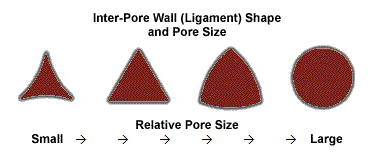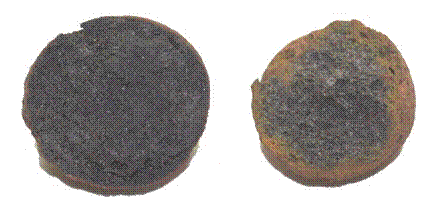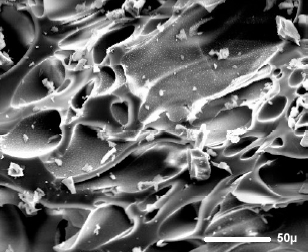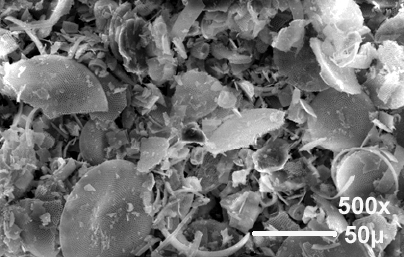As was described in the “Mineral Buildup” article, all types of media will accumulate minerals and plant waste products over time. With organic media components, we remedy the problem by discarding the old medium and replacing it with fresh material. Inorganic media offer long life, reduced repotting labor and lower costs, but that extended life also offers opportunity for mineral buildup. Through choice of culture technique (semi-hydroponics, for example) or alteration of our watering and feeding regimen, we can do much to ameliorate the mineral buildup in inorganic media, but the structure of the medium particle can play a significant role, as well.
Focusing on an engineered material – LECA (lightweight expanded clay aggregate) – there are many brands available, and each has its own set of properties. Of most importance to mineral buildup is the microstructure – specifically the size of the pores and their effect on the walls between them.
In the production of an “expanded” clay body, organic and inorganic additives are mixed with the clay formulation on a large, rotating platform. As the little balls roll around, they accumulate more and more clay, sort-of like enlarging snowballs to build a snowman. Some of those additives are present merely to act as “binders” to maintain particle integrity in their “green” (unfired) state, but others – in addition to the specific firing profile – play an active role in determining the microstructure and performance properties of the fired pellet. Some act to “flux” (lower the melting point of) the ceramic formulation so that it turns into a fluid glassy material, while others “off-gas” to form the porosity. The result of their interaction is key. Let’s look at a couple of simplified, contrasting scenarios, based simply on pore size:
One may think of the hot, vitrified body as a “foam”. Foams with fewer, larger bubble tend to have thicker walls between them. Not only that, but the shape of the so-called “ligaments” is dependent upon the pore size:

OK, great. But what’s that got to do with anything?
In order to answer that, we have to consider the transfer of liquid from one pore to another. LECA pellets are made from material similar to that used for making bricks. Liquid will not flow though a brick – unless it is cracked! Yes, it is literally the microscopic cracks in the pore walls through which the water and nutrient solutions pass from pore to pore.
Ceramics are brittle materials and are prone to cracking, even if it is on a microscopic level. In a thinner wall – or one with concave faces, as it the case with those between small pores – probability favors the connection of more of those microscopic cracks, increasing the transference of liquids from one pore to the next – upon both absorption and release.
From a practical perspective then, we desire an inert medium with very fine, evenly dispersed porosity separated by thin walls, like the example on the left, rather than the coarse structure shown on the right.

One might argue, however, that better communication between pores means the mineral-laden solutions will penetrate the structure more thoroughly, leading to increased mineral buildup. That would be true if that was the only factor involved.
In a body with small pores, the surface tension of the liquid tends to completely fill the pore volume, while in larger pores, only the surface of the pore is wetted, leaving an air space and the ability of the water to evaporate, leaving the minerals behind. Without evaporation, no deposition of the dissolved minerals will occur.
So how does this relate to inorganic media components other than LECA?
Lava rock is often used by growers, but its very coarse, surface porosity, coupled with thick walls, will lead to significant buildup over time.

Pumice, another glassy volcanic material, is quite variable in structure, but is often in the form of small, irregularly-shaped “tubes”, again allowing lots of air penetration within the structure, leading to buildup.

Diatomite is a calcined sedimentary rock formed from prehistoric diatoms and algae. As such, we are dealing not so much with melt-formed pores as with the dense packing of microscopic skeletons, creating an ultra-fine network of pores:

What cannot be seen in the image above is that each of those pieces of crumbled material are themselves riddled with all sorts of even smaller spaces in the “skeleton” structure. It is those that are primarily responsible for the buildup in diatomite, as the minerals and wastes become adsorbed onto the surfaces – much like activated charcoal – making them very difficult to remove.
